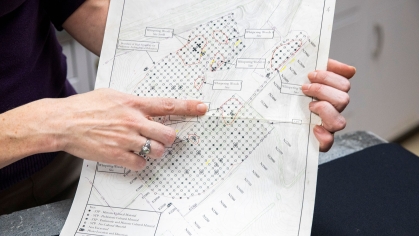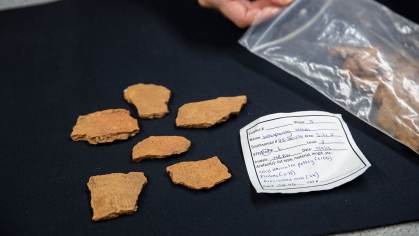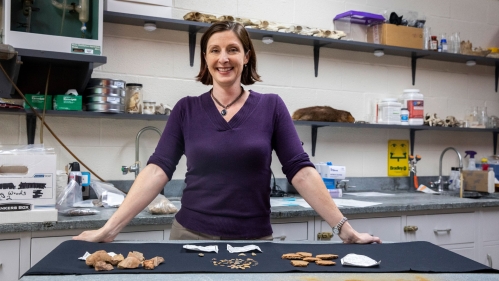Long before anyone from Europe landed on the shores of North America, the Indigenous Lenni Lenape people established a vibrant, stable, and complex society in the Northeastern Woodlands, primarily in what is now New Jersey, Delaware, and Eastern Pennsylvania. At a site known as Whispering Woods in the small town of Pilesgrove, New Jersey, the story of the Lenni Lenape has been partially pieced together, one discovery at a time.
“The items and artifacts found during our archeological work at this site inform our understanding of the greater arc of the human experience," said Kimberlee Sue Moran, an associate teaching professor in the Department of Sociology, Anthropology, & Criminal Justice at Rutgers University–Camden specializing in forensic archaeology.

Moran was invited to conduct archeological research at the site by the property owner after an initial survey revealed a high likelihood of previous human activity from the time of the Lenape. Moran dug in with archeologists from a local foundation and students from Rutgers University–Camden.
“In this line of work, you are literally getting your hands dirty,” Moran said. "As you dig, you can see how the layers of dirt, sediment, sand, and rock settled over the millennia because the colors differ from period to period."
Moran noted that in addition to being able to discern different periods by the color and striations of the soil, you can determine when human activity may have been happening because artifacts tend to cluster together at different levels within the ground.
The opportunity for the Rutgers–Camden students was both unique and meaningful. In addition to their work in the classroom, participants spent a significant amount of time in the field, participating in the excavation under the supervision of Moran and other archeologists.
Over time, they unearthed thousands of artifacts, including arrowheads; flake or debitage, indicating that tools were being made or repaired at the site; scrappers, tools that the Lenni Lenape used to clean animal hides; and fire-cracked rock, which were rocks Indigenous people would heat in fire then drop into cold water to heat the water – the pottery they had at that time was not fire stable.

Moran and her students' work was critical to the preservation and understanding of the Lenni Lenape people and their culture.
“One of the goals of an archeological excavation is cultural resource management – in other words, preserving the culture, artifacts, and heritage of the Indigenous people who lived in North America for centuries before any European contact," said Moran.
She added that work like the kind that was done at Whispering Woods creates a deeper connection to the people that inhabited North America for thousands and thousands of years before European contact.
“It creates a physical connection to the history of this land,” said Moran. “It informs our understanding of the greater arc of the human experience and those that lived here before European colonization, people who did an incredible job being responsible stewards of the land and the environment.”



